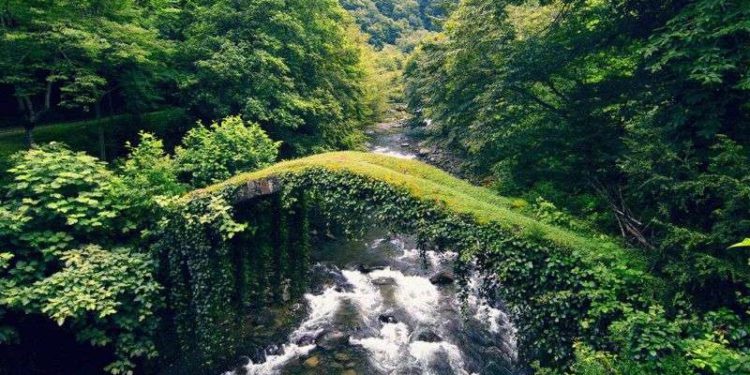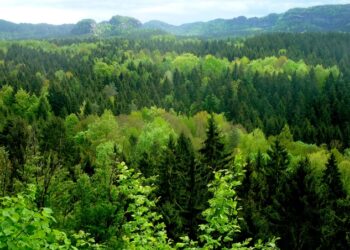The national parks and other protected areas that cover more than 11% of Georgia’s territory are tasked with safeguarding the country’s unique natural treasures. This includes protecting endangered species like the bezoar goat from illegal hunting and Georgia’s vast and diverse woodlands from illegal logging. Georgia’s park rangers face the daunting and sometimes dangerous task of patrolling this vast terrain, but their work is now being made easier thanks to state-of-the-art biodiversity monitoring technology provided by the United Nations Development Program (UNDP).
First to be equipped was the sprawling Borjomi-Kharagauli National Park, which covers more than 100,000 hectares of mountainous terrain, and like Georgia’s other 92 protected areas is managed by the Agency for Protected Areas (APA) under the Ministry of Environmental Protection and Agriculture.
UNDP Head Louisa Vinton and APA Chairperson Valerian Mchedlidze on 11 March delivered equipment to the park that will enable its corps of 77 seasoned rangers to use smartphones and tablets to collect real-time information on poaching incidents, wildlife sightings and even signs of infestation by the bark beetle, a pest that plagues coniferous trees. Data collected during patrols will be processed in a unified database, with a software program then shaping the choice and frequency of ranger patrol routes.
“Nature brings tourists to Georgia and thus is key to any post-pandemic recovery,” said Vinton. “This exciting new technology is a big step forward in ensuring that the country’s rangers have the tools and skills they need to protect the flora and fauna that make Georgia such a unique place to visit.”
The Spatial Monitoring and Reporting Tool (SMART) system, in high demand globally, is brand-new to Georgia.
“We are introducing a new system to collect biodiversity data and register violations in protected areas. Our rangers are now equipped with SMART devices where this application is integrated,” said Mchedlidze. “The SMART monitoring and patrolling system will make ranger patrols more efficient and effective, contributing to the effective management of protected areas.”
The new technology provided by UNDP comes as part of a broader USD 1.8 million program aimed at improving the management of 12 major protected areas in Georgia. The program is funded by the Global Environmental Facility (GEF) and implemented in partnership with the APA and the Caucasus Nature Fund (CNF). UNDP is providing additional assistance, including developing new hiking trails and providing first aid training to rangers, through a Swedish-funded program for democratic reforms.
Protected areas are a national priority for Georgia. Since 1991, Georgia’s protected areas have almost tripled in size, expanding to 11.4 percent of the country’s territory as of 2020 and encompassing more than 790,000 hectares of unique forests, landscapes, rivers and lakes. This has required modernizing the management of protected areas to safeguard biodiversity and integrate ecosystem services into the country’s economic and social development, ensuring that local communities see nature protection as an economic opportunity rather than a threat to their livelihoods. The establishment of a professional ranger service and a modern system of biodiversity monitoring is key to these reforms.
Georgia adopted a ten-year biodiversity monitoring plan in 2020, committing to study and monitor rare and endangered species of animals, birds, fish and plants in all protected areas across the country.














